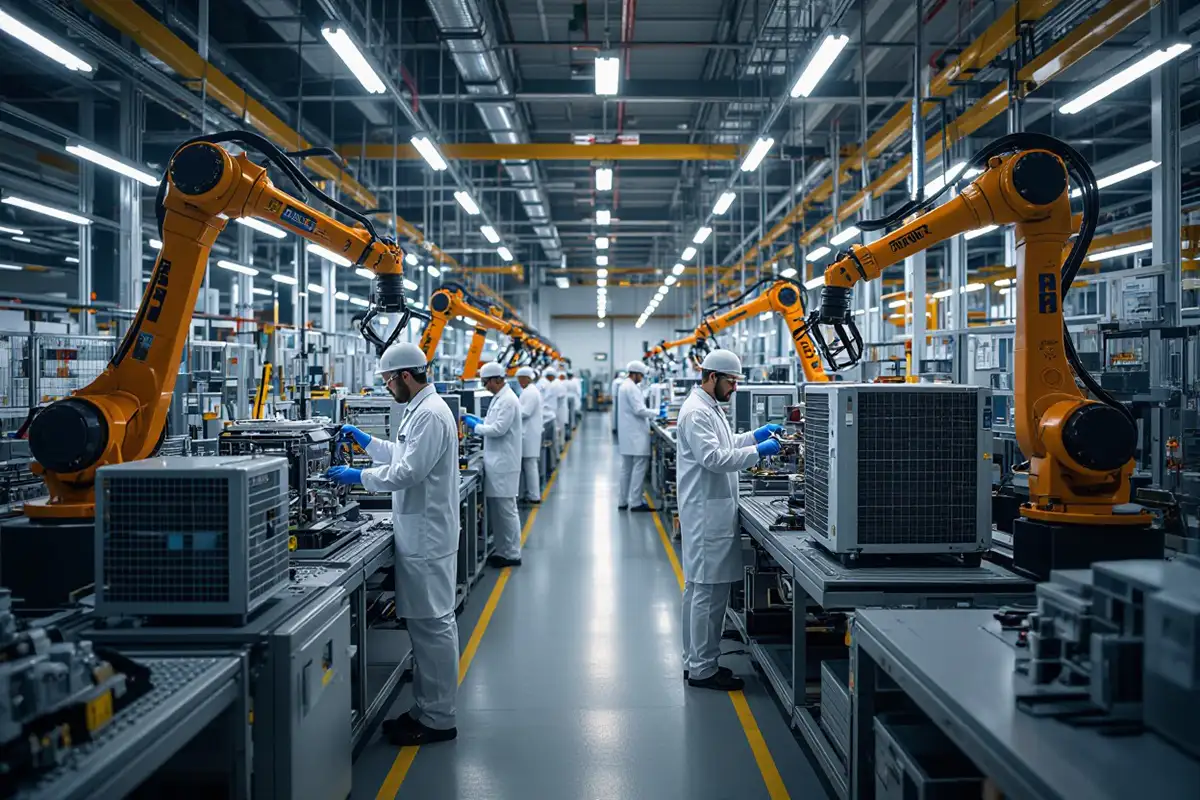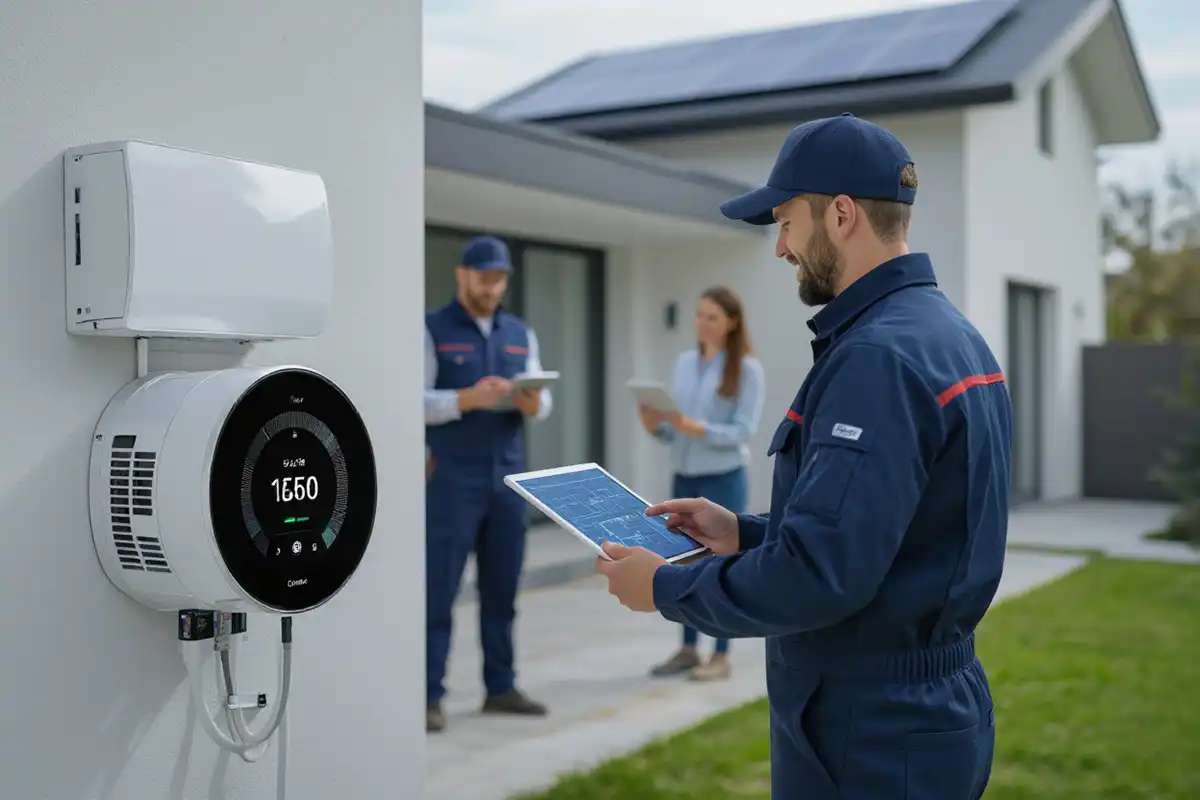
2026 marks a pivotal shift in HVAC, and as a professional or property owner you need to understand how electrification, smart controls, efficiency regulations, decarbonization and workforce upskilling will reshape your equipment choices, installation practices and maintenance strategies so you can plan investments, comply with evolving codes, and keep systems resilient.
Types of HVAC Trends
| Smart Controls & IoT | Smart thermostats, zoning, and BMS integration (BACnet/Modbus) enabling 10–15% site energy reductions and remote fault detection. |
| Electrification & Heat Pumps | Air- and cold-climate heat pumps replacing gas furnaces, often cutting heating emissions 30–50% depending on grid mix. |
| Low‑GWP Refrigerants | Shift to R32, R1234yf and CO2 (R744) driven by HFC phase‑downs and regulatory mandates. |
| IAQ & Ventilation Upgrades | ERVs, upgraded filtration (MERV13/HEPA), CO2 sensors and UV‑C for improved occupant health and productivity. |
| Predictive Maintenance & Analytics | Cloud analytics and FDD (fault detection and diagnostics) reducing unplanned downtime and service costs through proactive repairs. |
- Smart Controls & IoT for remote optimization
- Electrification via high‑efficiency heat pumps
- Low‑GWP refrigerant adoption
- Enhanced IAQ and energy‑recovery ventilation
- Predictive maintenance using machine learning
- More robust HVAC business software for streamlining operations
Tip for SMBs: Consider offering IoT-based maintenance plans. Your team can monitor systems remotely and upsell predictive maintenance—before breakdowns happen.
Smart Technology Integration
You can leverage smart thermostats (Nest, Ecobee), occupancy sensors, and BMS integration to create dynamic zoning, demand‑response participation, and automated setback schedules; deployments often use BACnet/Modbus gateways and cloud analytics to pinpoint inefficiencies, with field reports showing 10–15% HVAC energy savings and faster fault resolution through remote commissioning and FDD tools.

Sustainable Solutions
You’ll see rapid uptake of air‑ and ground‑source heat pumps, ERVs, and low‑GWP refrigerants—projects using cold‑climate heat pumps report significant fuel switching, while retrofits that add ERVs and MERV13 filtration balance efficiency with improved IAQ; incentives and updated codes are accelerating commercial and residential conversions.
The push toward low‑GWP refrigerants, electrification with heat pumps, and integrated ERV/filtration strategies means you can cut HVAC carbon intensity by 30–50% in many projects, with manufacturers such as Daikin and Carrier already offering R32 and CO2 systems and utilities providing rebates to accelerate retrofit economics.
Key Factors Influencing HVAC Changes
You'll see five converging drivers reshaping HVAC: electrification, low‑GWP refrigerants, stricter efficiency rules, connected controls, and workforce constraints that affect service capacity.
- Electrification and heat pump adoption
- Refrigerant phase‑downs and alternative blends
- Rising performance standards and incentive programs
- IoT-enabled predictive maintenance and controls
Detailed coverage appears in 2025 Commercial HVAC Trends: Heat Pump Adoption and .... After reviewing these factors, you should prioritize systems that balance efficiency, refrigerant risk and interoperability.
Tip for SMBs: Stay ahead by training your team in heat pump installation and repair. It’s a high-demand service area that customers are actively searching for.
Regulatory Developments
You face accelerating GWP caps and evolving efficiency mandates—DOE's updated metrics (SEER2/HSPF2) plus state HFC restrictions push faster adoption of low‑GWP refrigerants and heat pumps; programs in New York and California already offer rebates and performance incentives. Compliance windows in 2025–2026 mean you must shift procurement toward certified low‑GWP equipment, plan for retrofit allowances, and ensure technicians hold relevant certifications to avoid supply and permitting delays.
Tip for SMBs: Use software for scheduling that helps track compliance reports automatically. That way, you can provide documentation when bidding on jobs and build trust with commercial clients.
Consumer Expectations
Your customers expect quieter, smarter systems with transparent operating costs and better indoor air quality; many commercial retrofits report 20–30% energy reductions after switching to heat pumps, accelerating ROI-driven decisions and demand for financing options or performance contracts.
Expect buyers to favor providers who deliver telemetry, clear payback models, and verified emissions or IAQ metrics; lease negotiations increasingly include HVAC performance clauses, residential buyers want app‑based controls and easy rebate access, and you’ll win more work by offering remote monitoring, fixed‑price maintenance plans, and documented installer qualifications.
Step-by-Step Guide to Adopting New HVAC Technologies
| Assess | Perform an ASHRAE Level II audit and baseline with 12 months of utility interval data to quantify COP, SEER/IEER, and distribution losses. |
| Pilot | Deploy upgrades on ~10% of floor area or one building type to measure real-world savings before network-wide rollout. |
| Specify | Choose systems with BACnet/MQTT support, VFDs, and heat recovery; require firmware update paths and open APIs in contracts. |
| Finance | Model ROI with utility incentives and expected 15–30% energy reduction; target measures with 1.5–5 year payback periods. |
| Train | Provide technician certification on new controls, fault detection, and cybersecurity hygiene to cut maintenance calls and misconfigurations. |
| Monitor | Use cloud analytics and normalized metering to track kWh, peak kW, setpoint excursions, and persistent faults for continuous improvement. |
Evaluating System Efficiency
Start with metered performance: compare measured COP, SEER/IEER, and system ventilation rates against ASHRAE 90.1 baselines and ENERGY STAR benchmarks; target upgrades that yield 15–30% site-energy reduction such as adding VFDs, reclaiming heat with desiccant or heat-recovery chillers, or converting constant-volume AHUs to VAV. You should collect at least 12 months of interval data or a normalized estimate, then rank measures by simple payback and impact on peak demand to prioritize incentives and phased deployment.
Integrating Smart Controls
Adopt BACnet/IP or MQTT-enabled controllers, integrate weather forecasts and occupancy sensors, and deploy cloud analytics to reduce HVAC energy 8–12% per DOE estimates; pilot occupancy-based zoning and setback strategies on a subset of spaces, validate fault detection within days, and enforce firmware management plus VLAN segmentation to maintain cybersecurity and performance consistency.
For deeper integration, map data flows: edge controllers should preprocess temperature, CO2, and metering streams, publish normalized telemetry via MQTT or BACnet/SC to your analytics platform, and allow two-way setpoint control through role-based APIs. Implement rule-based sequences (night setback, weekend scheduling, demand limiting) plus machine-learning anomaly detection to reduce false positives. Track KPIs—kWh, peak kW, HVAC-specific energy intensity (kWh/ft²), comfort-setpoint excursions, and mean time between failures—to quantify benefits; in multi-site pilots operators commonly report 10–20% HVAC energy reductions, 30–50% fewer alarms, and paybacks of 1.5–4 years depending on incentives and scale.
Tips for HVAC Professionals
You should prioritize cross-training on heat pumps, controls, and low‑GWP refrigerants as electrification and the AIM Act–driven HFC phase‑down accelerate equipment change; many contractors report rising demand for R‑454B and R‑32 installs. Track industry analysis like 2025 Commercial HVAC Trends and the Future of HVAC Innovation, set KPIs (24–48h response, first‑time fix rate), and document parts stocking. Any plan must include documented training, parts levels, and ROI tracking.
- Cross-train technicians on heat pumps, controls, and refrigerant handling.
- Stock common inverter compressors, service valves, and low‑GWP adapters.
- Digitize inspections with photos, thermal images, and time‑stamped reports.
- Offer tiered maintenance plans with clear SLAs and online scheduling.
Staying Updated with Industry Standards
You should monitor EPA Section 608 updates, SNAP rulings, and local code amendments while subscribing to manufacturer bulletins and ASHRAE addenda; attending one manufacturer boot camp and completing 16–24 hours of accredited training annually keeps your team compliant and competitive.
Effective Communication with Clients
You should present clear, quantified proposals that include estimated kWh savings, COP or SEER comparisons, and simple payback timelines, supported by photos and manufacturer performance curves to reduce objections and speed approvals.
Use a CRM to log service history, send inspection reports within 24 hours, and offer 3-tier proposals (basic/standard/premium) with transparent pricing and financing options (12‑ or 24‑month plans); scripted answers for common objections and follow-up touchpoints at 7 and 30 days lift conversion and retention.
Pros and Cons of Emerging HVAC Technologies
| Pros | Cons |
|---|---|
| Significant energy savings: smart controls often deliver 10–20% reductions in HVAC energy use. | Higher upfront cost: advanced systems can add 10–30% to initial project budgets. |
| Improved comfort: zoned control and adaptive algorithms maintain tighter temperature/humidity bands. | Integration gaps: legacy BMS often require gateways or custom engineering to connect. |
| Predictive maintenance reduces downtime via anomaly detection and ML-based fault alerts. | Data and cyber risks: connected units increase attack surface and demand cybersecurity measures. |
| Demand-response participation unlocks utility rebates and lower peak charges. | Vendor lock-in risk with proprietary platforms and limited interoperability. |
| Lower lifecycle costs in many cases; IoT monitoring extends equipment life by optimizing cycles. | Skilled labor shortage: technicians need training on controls, refrigerants, and networking. |
| Better IAQ control via integrated filtration, UV, and ventilation analytics. | Privacy concerns over occupancy and usage data collected by sensors and thermostats. |
Benefits of Smart HVAC Systems
You can cut HVAC energy consumption by 10–20% with smart thermostats, zoning, and sensor-driven controls; Nest studies typically cite ~10–12% savings on heating and ~15% on cooling. Utilities often offer rebates—up to several hundred dollars per site—so your payback on commercial retrofits commonly falls in the 2–4 year range. Real-time fault detection also trims service calls: buildings using predictive analytics report 25–40% fewer emergency repairs.
Potential Challenges and Drawbacks
You face higher initial capital and longer specification cycles when selecting IoT-heavy systems, with installations sometimes adding 10–30% to costs. Integration with older BMS requires protocol converters (BACnet, Modbus), and unsecured endpoints create cyber risk if you don’t enforce strong network segmentation and vendor SLAs.
More detail shows technician certification matters: low‑GWP refrigerants under the Kigali-driven phase-down force retooling and retraining, and many contractors lack HVAC+IT skills. Case studies of a 100,000 ft² office retrofit reveal about an 18% energy drop but a 3‑year payback—so your ROI depends on building profile, utility rates, and how aggressively you apply analytics, maintenance workflows, and cybersecurity safeguards.
Conclusion
Ultimately, you must adapt as electrification, widespread heat pump adoption, low‑GWP refrigerants, and tighter efficiency standards reshape HVAC through 2025–2026; smart controls, IoT-driven predictive maintenance, grid-interactive systems, and workforce upskilling will change how you design, operate, and service equipment, and embracing data-driven optimization and regulatory compliance will keep your projects competitive and resilient.
Take the next step: See how our software can help your HVAC business streamline operations, impress customers, and grow revenue.
